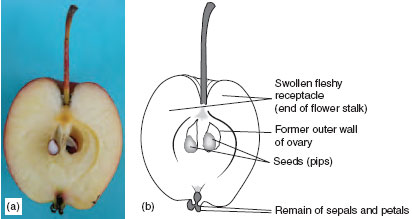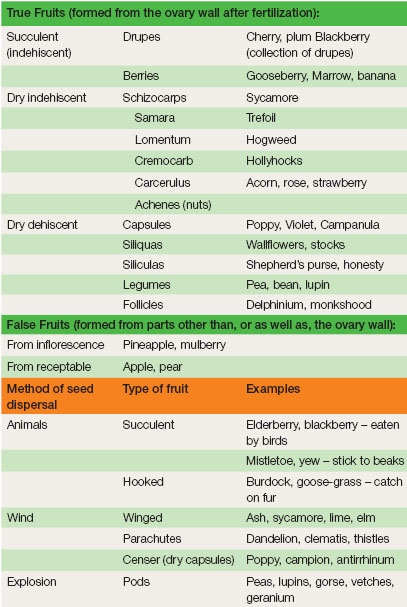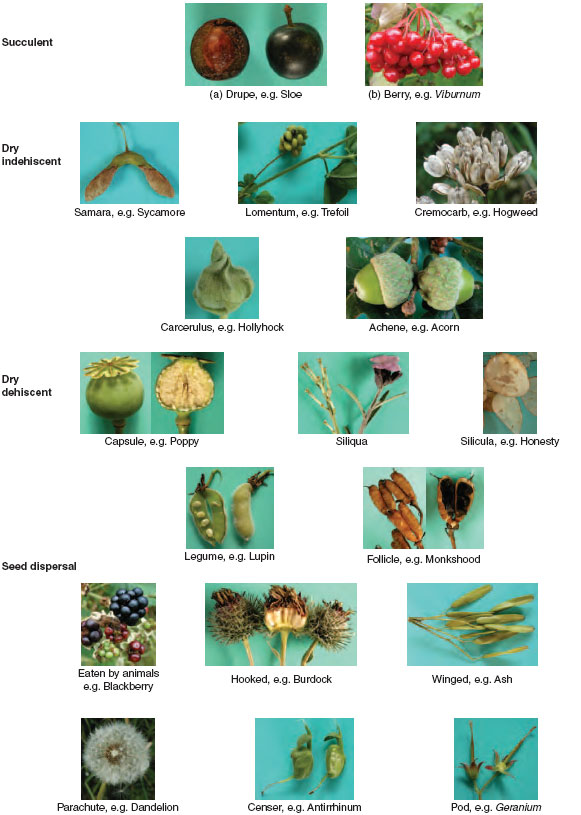 |
Figure 7.8 Apple – a false fruit (pome) (a) LS of crab
apple
and (b)
showing structure |
The development of the true fruit involves either the expansion of the
ovary into a juicy
succulent structure, or the tissues becoming hard and
dry. In false fruits other parts, such as the inflorescence, e.g. pineapple and
mulberry, and the receptacle, as in apple, become part of the structure.
The succulent fruits are often eaten by animals, which help seed
dispersal, and may also bring about chemical changes to break
dormancy mechanisms. Some fruits (described as being
dehiscent), release their seeds into the air. They do this either by an
explosive method as seen in brooms and poppies; or by tiny feathery
parachutes, seen in willow herb and groundsel. Dry fruits may rot away
gradually to release their seeds by an
indehiscent action. Different
adaptations of fruit, many of which are of economic import ance, and
the methods by which seeds are dispersed are summarized in Table 7.1
and illustrated in Figure 7.9.
 |
| Table 7.1 Fruits and the dispersal of seeds |
 |
| Figure 7.9 Fruit types and seed dispersal |
Fruit set
The process of pollination, in most species, stimulates fruit set. The
hormones, in particular gibberellins, carried in the pollen, trigger the
production of auxin in the ovary, which causes the cells to develop. In
species such as cucumber, the naturally high content of auxin enables
fruit production without prior fertilization, i.e.
parthenocarpy, a useful
phenomenon when the object of the crop is the production of seedless
fruit. Such activity can be simulated in other species, especially when
poor conditions of light and temperature have caused poor fruit set in
species such as tomato and peppers. Here, the flowers are sprayed with
an auxin-like chemical, but the quality of fruit is usually inferior. Pears
can be sprayed with a solution of gibberellic acid to replace the need for
pollination. Fruit ripening occurs as a result of hormonal changes and involves in tomatoes a change in the sugar content, i.e. at the crucial
stage called
climacteric. After this point, fruit will continue to ripen
and also respire after removal from the plant. Ethylene is released by
ripening fruit, which contributes to deterioration in store. Early ripening
can be brought about by a spray of a chemical, e.g. ethephon, which
stimulates the release of ethylene by the plant, e.g. in the tomato.







